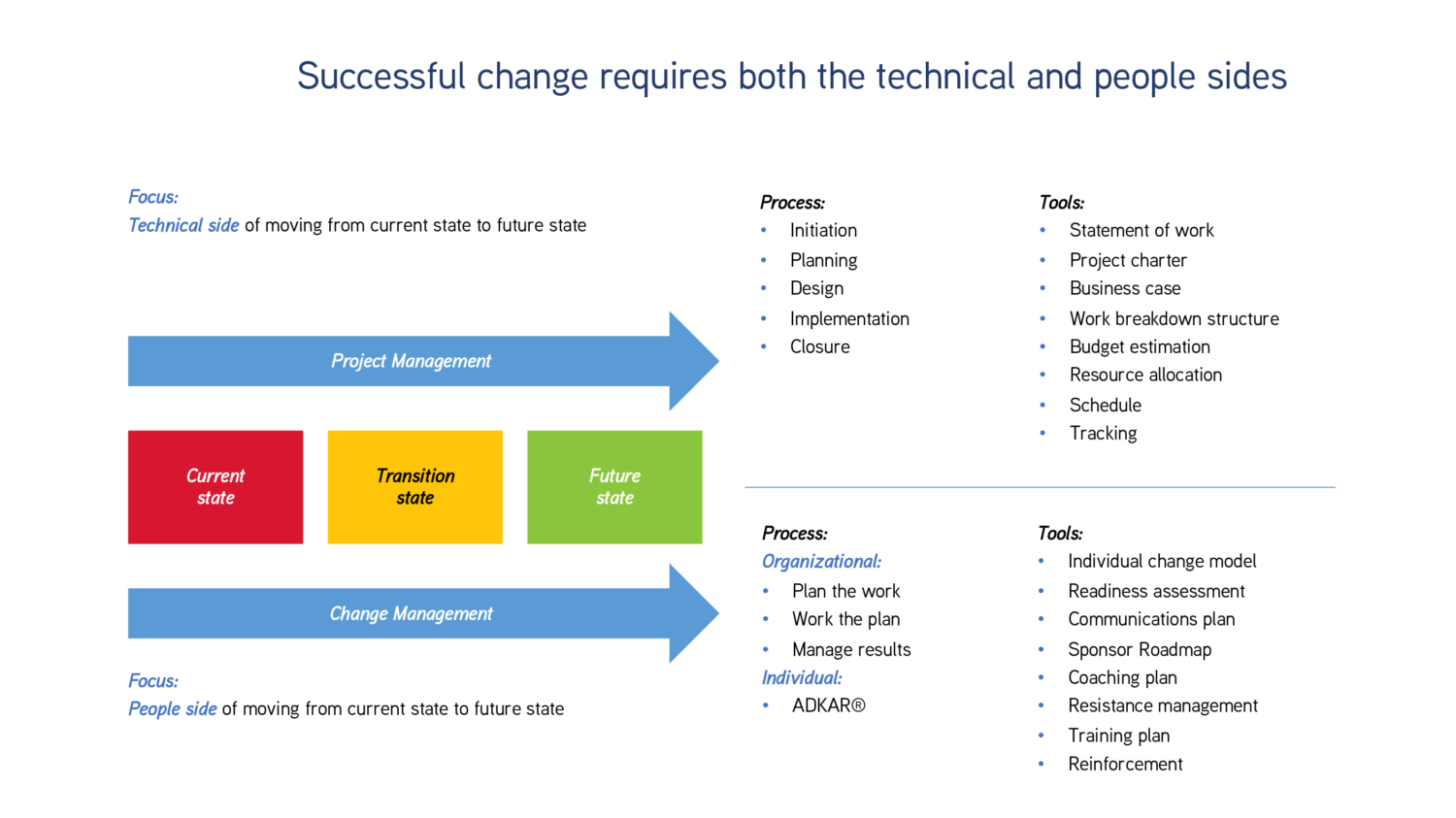Change without systems and transition is just a rearranging of the chairs—resulting in the often lamented: “Just because everything has changed doesn’t mean anything is different around here."

According to a study by McKinney & Company, 70% of change initiatives fail to achieve their goals. And the onus for this lies squarely in the lap of those who initiate organizational change without recognizing that there is only one thing that will make it successful—the people tasked with embracing it.
In its purest form change is situational. It represents a morphosis from one reality to another and can involve everything from the introduction of new processes or procedures to workplace reorgs and innovation — all with the goal of bringing about new desired outcomes.
Transition, on the other hand, is psychological, relating to the mental passage from one reality to another. It is a process that people go through to internalize and come to terms with the details of the change. And they are the key to successful change.
And a system is a set of principles or procedures that create an organized framework to support interconnecting networks. By their nature, they recognize that the nature of the world we live in is circular and interdependent.
So, while Change Management is concerned with the process, tools, and techniques used to manage the people side of change—Transition Advocacy is concerned with helping people create critical psychological realignments and repatterning that allow for sustained change. And Systems Thinking is the lens through which it all must be viewed because it acknowledges and sustains the mechanisms that allow us to operate as part of an interconnected network that is the modern-day workplace.
It is the synergy of these three practices that are at the core of studiotrope Design Collective’s Organizational Design Studio and our endeavors to help organizations, departments, teams, and individuals manage change so they can realize transformational and innovative goals.
